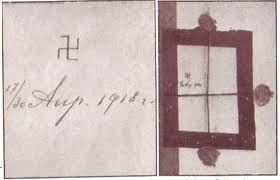An excerpt from "The Spiritual Meadow" by John Moschos, Chapter 66. The life of Abba Theodosios the Solitary
Abba Anthony, superior and builder of the Lavra of the Æolites, told us this about Abba Theodosios the solitary. He said: Before taking up the solitary life, I went into a trance and saw a young man whose appearance was brighter than the sun. He took me by the hand and said to me: 'Come, for you must fight', and he led me into an amphitheater larger than words could describe. I could see that the theatre was full of men, those on the one side dressed in white whilst those on the other side were black-faced ones. As he led me to the sanded pit of theatre I saw a black-faced man of exceedingly large stature whose head stood as high as the clouds, strong and ugly. Then the youth whom I saw in the vision said to me: 'It is with that one that you must fight'. When I saw the man, I was horror-struck; I began to quake and to be terrified. I started pleading with him who had brought me there, saying: 'What man who is merely mortal could strive with that one? [Not even the whole human race put together could withstand this fellow'. But the noble youth said to me:] 'Go in with confidence, for when you have joined in combat with him, it is I who shall decide the result and award the victor's crown.' Almost as soon as I had gone into the sanded pit and we had come to grips with each other, the noble umpire came at once, made his decision and awarded me the crown. The faction of the black-faced ones disappeared with moaning and groaning. The other faction, consisting of those who wore white, shouted their approval of the umpire and of him who had awarded me an auspicious victory.
According to Encyclopedia Britannica John Moschos lived from during the 6th and 7th centuries. He was a Byzantine monk whose work Pratum Spirituale (“The Spiritual Meadow”), describing monastic spiritual experiences throughout the Middle East, became a popular example of ascetic literature during the medieval period and was a model for similar works. He is a Saint in the Orthodox Church and his feast day is March 11.











